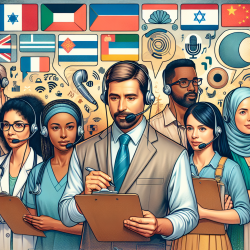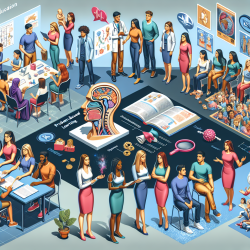In the realm of speech-language pathology, leveraging historical insights can significantly enhance contemporary practices. A fascinating example is the work of female neuroscientists in the Cajal School, as detailed in the research article "The Women Neuroscientists in the Cajal School" (Giné et al., 2019). This article highlights the contributions of women like Laura Forster and Manuela Serra, whose pioneering work in neuroanatomy offers valuable lessons for today's practitioners.
Key Takeaways for Speech-Language Pathologists
The historical contributions of these women can inform and improve modern therapeutic practices in several ways:
1. Emphasis on Neuroplasticity:The research conducted by these early neuroscientists underscored the brain's ability to reorganize itself by forming new neural connections. This concept of neuroplasticity is fundamental in speech-language therapy, particularly in interventions for children with developmental disorders. Practitioners can draw on this principle to design activities that stimulate brain plasticity, thereby enhancing language acquisition and cognitive development.
2. Importance of Detailed Observation:The meticulous observational techniques used by Laura Forster and her contemporaries can inspire modern therapists to adopt a more detailed and data-driven approach. By carefully documenting and analyzing each child's progress, therapists can tailor interventions more precisely, leading to better outcomes.
3. Integrative Approach:The collaborative environment of the Cajal School, where multiple disciplines intersected, highlights the benefits of an integrative approach. Speech-language pathologists can collaborate with other professionals, such as occupational therapists and psychologists, to provide a more comprehensive treatment plan for children.
Encouraging Further Research
Understanding the historical context and contributions of these women also encourages ongoing research in the field. Practitioners are urged to delve deeper into the historical literature and current research to continuously improve their therapeutic strategies. By doing so, they not only honor the legacy of these pioneering women but also contribute to the advancement of speech-language pathology.
Practical Implementation
Here are some practical steps to integrate these insights into your practice:
- Incorporate Neuroplasticity Exercises: Design activities that promote neural reorganization, such as repetitive language tasks and sensory integration exercises.
- Adopt a Data-Driven Approach: Use detailed observational and recording methods to track progress and adjust interventions as needed.
- Foster Interdisciplinary Collaboration: Work closely with other specialists to create a holistic treatment plan that addresses all aspects of a child's development.
Conclusion
By implementing the insights gained from the research on the women neuroscientists in the Cajal School, speech-language pathologists can enhance their practice and create better outcomes for children. The dedication and meticulous work of these early pioneers serve as a powerful reminder of the importance of detailed observation, neuroplasticity, and interdisciplinary collaboration.
To read the original research paper, please follow this link: The Women Neuroscientists in the Cajal School.










